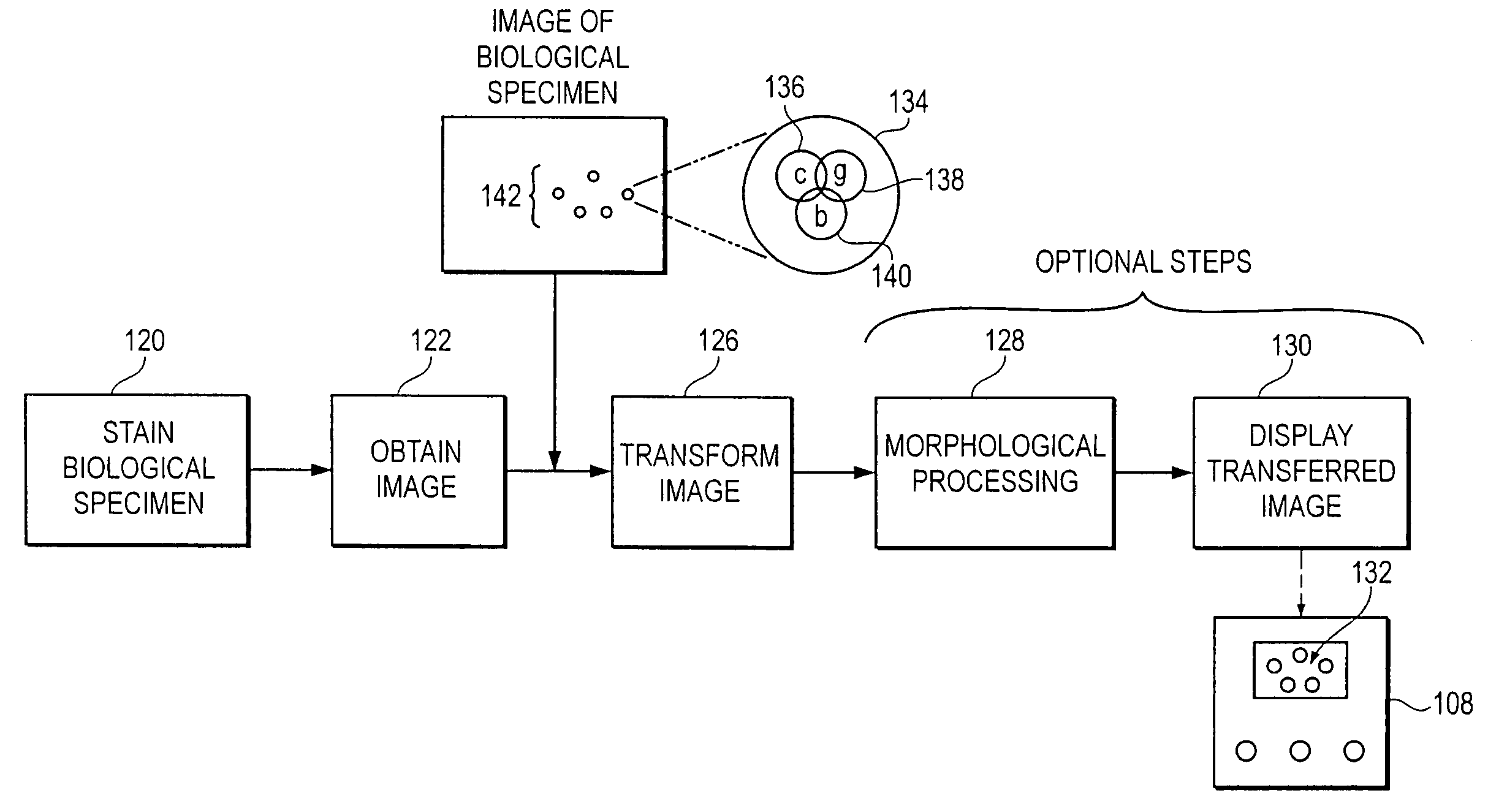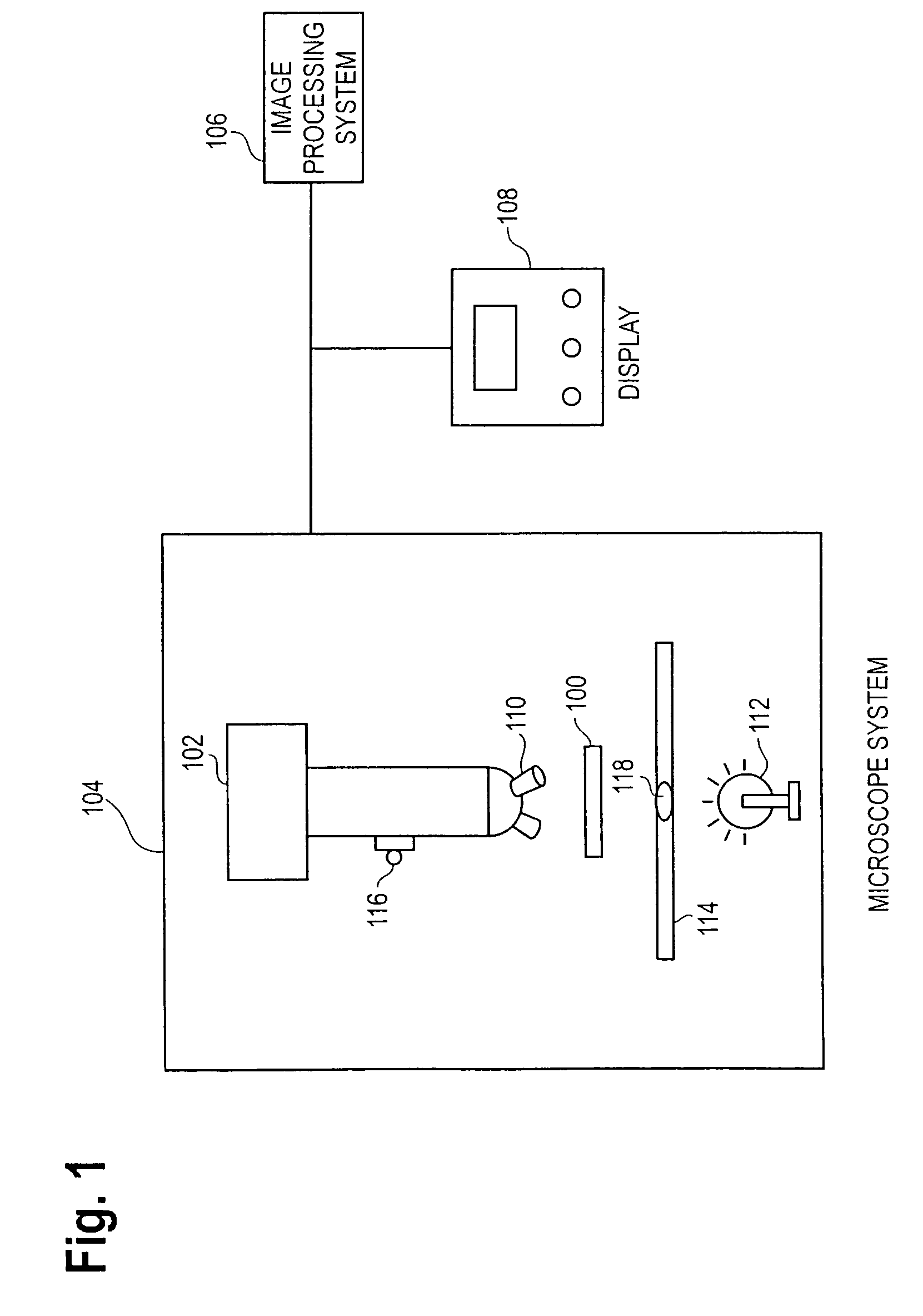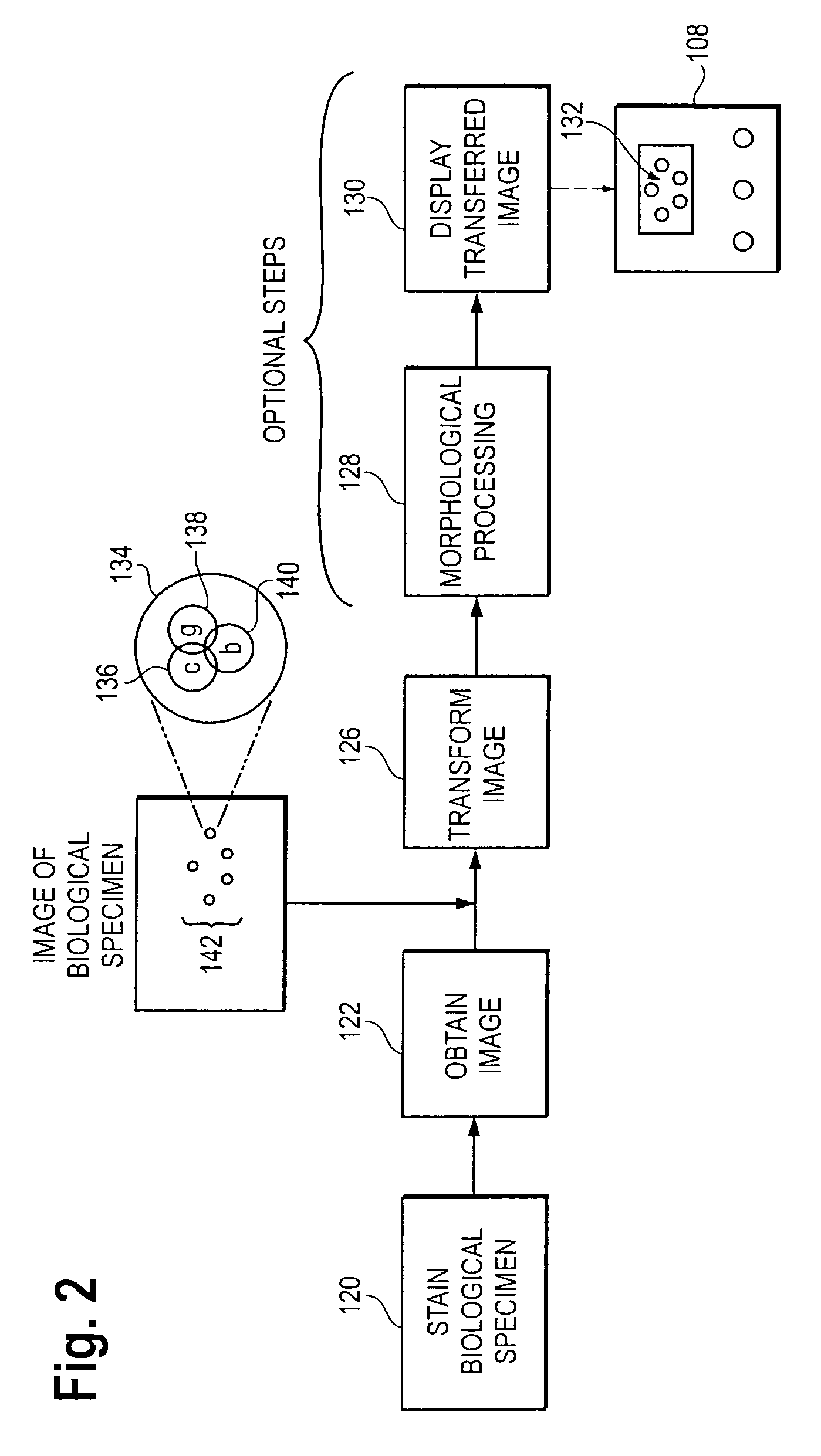Color space transformations for use in identifying objects of interest in biological specimens
a color space and object technology, applied in image enhancement, image data processing, instruments, etc., can solve the problems of ratio-based color transformation, difficult detection of cancer cells or particular proteins in biological specimens, improper characterization of areas, etc., to achieve the effect of observing and identifying objects
- Summary
- Abstract
- Description
- Claims
- Application Information
AI Technical Summary
Benefits of technology
Problems solved by technology
Method used
Image
Examples
Embodiment Construction
[0036]FIG. 1 is a block diagram of exemplary apparatus for automated cell analysis of a biological specimen, in which exemplary embodiments of the present invention may be employed. It should be understood that this and other arrangements and elements (e.g., machines, interfaces, functions, orders of elements, etc.) can be added or used instead and some elements may be omitted altogether. Additionally, those skilled in the art will appreciate that many of the elements described herein are functional entities that may be implemented as discrete components or in conjunction with other components, in any suitable combination and location. Moreover, the various functions described herein as being performed by one or more entities may be carried out by hardware or by a processor programmed to execute an appropriate set of computer instructions stored in memory. Provided with the present disclosure, those skilled in the art can construct the hardware and develop the appropriate set of com...
PUM
| Property | Measurement | Unit |
|---|---|---|
| color space transformations | aaaaa | aaaaa |
| color | aaaaa | aaaaa |
| colors | aaaaa | aaaaa |
Abstract
Description
Claims
Application Information
 Login to View More
Login to View More - R&D
- Intellectual Property
- Life Sciences
- Materials
- Tech Scout
- Unparalleled Data Quality
- Higher Quality Content
- 60% Fewer Hallucinations
Browse by: Latest US Patents, China's latest patents, Technical Efficacy Thesaurus, Application Domain, Technology Topic, Popular Technical Reports.
© 2025 PatSnap. All rights reserved.Legal|Privacy policy|Modern Slavery Act Transparency Statement|Sitemap|About US| Contact US: help@patsnap.com



